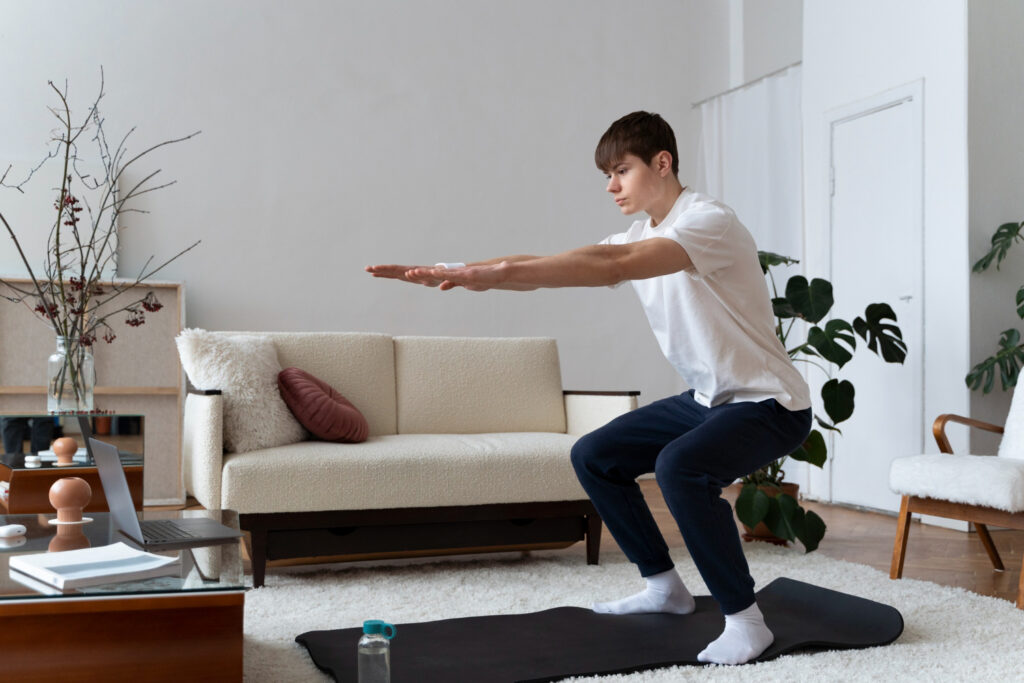Many people frequently encounter the problem of muscle stiffness, particularly following extended periods of inactivity or intense physical exercise. If not appropriately treated, it can make daily activities more difficult, reduce flexibility, and potentially result in injury. Frequent exercise intervals are an excellent strategy to avoid and treat muscular stiffness, though. This blog will discuss the value of consistent exercise in reducing muscle stiffness, as well as the kinds of exercises that are best and how to incorporate them into your routine for best effects.

The Benefits of Regular Interval Training for Preventing and Treating Muscle Stiffness
Knowing What Causes Muscle Stiffness:
It’s important to comprehend the reasons of muscle stiffness before discussing how exercise might help manage it. Many variables can lead to muscle stiffness, such as:
1. Lack of movement:
Stiff and tense muscles can result from extended periods of inactivity.
2. Bad posture:
Prolonged slouching or sitting can cause stiffness in the muscles, especially in the neck, shoulders, and back.
3. Overuse or injury:
Muscle soreness and stiffness can be brought on by vigorous exercise or repetitive motions without enough rest.
4. Ageing:
Our muscles become less flexible and elastic with age, which increases the likelihood that they will become stiff.
The Function of Physical Activity:
Due to its ability to increase blood flow, increase muscle strength, and increase flexibility, exercise is essential for both controlling and preventing muscle stiffness. Regular
1. Boost circulation:
Exercise increases blood flow to the muscles, supplying them with nutrients and oxygen that are vital to their health. This improved circulation facilitates a quicker recovery from exercise and helps to lessen stiffness.
2. Boost flexibility:
By increasing range of motion and flexibility, stretching exercises like yoga or Pilates can lower the risk of injuries and muscular stiffness.
3. Strengthen muscles:
Exercises that focus on certain muscle groups can help to increase endurance and strength, which can assist to reduce stiffness and enhance general muscle performance.
4. Encourage relaxation:
Physical activities that ease tension in the muscles, such as walking, cycling, or swimming, can help prevent stiffness brought on by stress or anxiety.

Exercises for Muscle Stiffness Types:
Including a range of workouts in your regimen is essential for addressing muscle stiffness. The following exercise regimens are ones that are especially advantageous:
1. Stretching can assist reduce
muscular stiffness and increase flexibility. Static stretching should be done after exercise and dynamic stretching should be done before. Stretching should concentrate on large muscle groups such the back, shoulders, calves, hamstrings, and quadriceps.
2. Strength training:
To increase strength and stability, incorporate workouts that work both major and small muscle groups. This can be done with bodyweight exercises like push-ups, planks, squats and lunges as well as with free weights or resistance bands.
3. Cardiovascular exercise:
Take part in exercises like brisk walking, jogging, cycling, or swimming that raise your heart rate and improve blood flow. Aim for 150 minutes or more a week of moderate-to-intense aerobic exercise.
4. Low-impact exercises:
To lessen joint stress while maintaining cardiovascular health and muscle flexibility, try low-impact activities like cycling, elliptical training, or water aerobics if you have joint problems or are recuperating from an injury.

Including Exercise in Your Daily Routine:
Exercise can help prevent and manage muscle stiffness, but you must incorporate regular physical activity into your routine to get its full advantages. The following advice can help you fit exercise into your everyday routine:
1. Start off slowly:
If you’ve never worked out before or haven’t been active in a while, begin with low-intensity exercises. As your fitness improves, progressively increase the duration and intensity of your workouts.
2. Plan regular exercise sessions:
Every day or every week, set aside a certain time to exercise, and treat it like you would any other essential appointment. The secret to getting results is consistency.
3. Mix it up:
Try a variety of exercises and activities to keep your training interesting and varied. This keeps you from getting bored and guarantees that you’re working diverse muscle groups.
4. Pay attention to your body:
Observe your body’s reaction to exercise and recovery. To avoid being hurt, adjust your activity or take a rest if you feel pain or discomfort.
5. Maintain proper hydration
and nutrition by drinking lots of water prior to, during, and after exercise. You should also feed your body wholesome meals that promote muscle growth and healing.

In summary:
Regular exercise intervals are very helpful in managing and preventing muscle tightness. Stretching, strength training, aerobic exercise, and low-impact activities can all help to improve circulation, strengthen muscles, increase flexibility, and encourage relaxation—all of which are important in lowering stiffness and promoting overall muscle health. In order to attain the best results and reap the rewards of a more flexible, resilient body, always remember to start cautiously, maintain consistency, and pay attention to your body.

